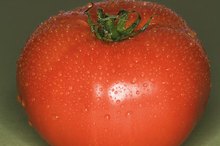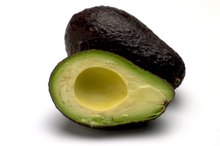What does fact checked mean?
At Healthfully, we strive to deliver objective content that is accurate and up-to-date. Our team periodically reviews articles in order to ensure content quality. The sources cited below consist of evidence from peer-reviewed journals, prominent medical organizations, academic associations, and government data.
The information contained on this site is for informational purposes only, and should not be used as a substitute for the advice of a professional health care provider. Please check with the appropriate physician regarding health questions and concerns. Although we strive to deliver accurate and up-to-date information, no guarantee to that effect is made.
Can You Be Allergic to Passion Fruit?
You can be allergic to essentially any food or beverage if your immune system perceives it as a threat to your body. Usually, your immune response is an accurate indication that some natural or artificial compound in food either causes disease or is potentially damaging. However, sometimes your immune system may overreact to a food that is normally considered innocuous or even healthy. Allergic reactions to passion fruit are rare, although those sensitive to latex rubber compounds are at greater risk. Consult with your doctor if you experience swelling and breathing problems after consuming passion fruit.
If you are experiencing serious medical symptoms, seek emergency treatment immediately.
Allergic Reactions to Food
Allergic reactions to food are relatively common, affecting an estimated 12 million Americans, a high proportion of whom are children. Sometimes food is contaminated with pathogens or contains toxins, which triggers the immune system to send white blood cells and other compounds to destroy, identify or isolate the potentially harmful allergen. At other times, your immune system seemingly overreacts to food that most people have no negative reactions to.
Passion Fruit
Tart Cherry Juice Allergies
Learn More
The flowers of the passion fruit vine resemble a crucifix, hence its name. The fruit is nearly round, 3 or 4 inches in diameter, and it has a tough, smooth skin ranging in color from deep purple to yellow or orange. The flesh is a mass of membranous sacs filled with orange, pulpy juice and numerous small seeds. The flavor is musky and is usually compared to guava and papaya. Passion fruit occasionally induces allergic reactions in extremely sensitized people, but more frequently reactions occur in those who are allergic to latex, according to “Public Health Nutrition.”
- The flowers of the passion fruit vine resemble a crucifix, hence its name.
- The fruit is nearly round, 3 or 4 inches in diameter, and it has a tough, smooth skin ranging in color from deep purple to yellow or orange.
Latex-Fruit Syndrome
Allergic reaction to natural rubber latex is well known. It is caused by the presence of enzymes called chitinases. According to “Human Metabolism: Functional Diversity and Integration,” a specific Class I chitinase is found in the pulp of passion fruit, which causes a cross-reaction with latex 3. This association is called latex-fruit syndrome. What it means is that people who are allergic to latex have a much higher risk of being allergic to fruits that contain similar chitinase proteins, such as:
- passion fruit
- kiwi
- papaya
- mango
- tomato
- avocado
- wheat
- Allergic reaction to natural rubber latex is well known.
- According to “Human Metabolism: Functional Diversity and Integration,” a specific Class I chitinase is found in the pulp of passion fruit, which causes a cross-reaction with latex 3.
Recommendations
Lychee Allergies
Learn More
If you or your children are allergic to latex rubber, then odds are in favor that you will have an allergic reaction to passion fruit and some other tropical fruits. Healthcare providers may have especially severe reactions to passion fruit because of repeated exposure to latex gloves. If you are worried about your potential reaction to some tropical fruits, talk to your doctor about getting an allergy test.
Related Articles
References
- Encyclopedia of Human Nutrition; Benjamin Caballero et al.
- Public Health Nutrition: From Principles to Practice; Mark Lawrence and Tony Worsley
- Human Metabolism: Functional Diversity and Integration; J. Ramsey Bronk
- MedlinePlus: Food Allergy
- Passion-fruit, (granadilla), purple, raw. FoodData Central. U.S. Department of Agriculture. Published April 1, 2019.
- Passos T, Sampaio H, Sabry M, Melo M, Coelho M, Lima J. Glycemic index and glycemic load of tropical fruits and the potential risk for chronic diseases. Food Science and Technology (Campinas). 2015;35(1):66-73. doi:10.1590/1678-457x.6449
- Potassium: Fact Sheet for Health Professionals. National Institutes of Health, Office of Dietary Supplements. Updated 2020.
- Kahleova H, Dort S, Holubkov R, Barnard ND. A plant-based high-carbohydrate, low-fat diet in overweight individuals in a 16-week randomized clinical trial: The role of carbohydrates. Nutrients. 2018;10(9). doi:10.3390/nu10091302
- It's Easy to Add Fruits and Vegetables to Your Diet. American Cancer Society. Updated 2017.
- Dos Reis LCR, Facco EMP, Salvador M, Flôres SH, De Oliveira Rios A. Antioxidant potential and physicochemical characterization of yellow, purple and orange passion fruit. J Food Sci Technol. 2018;55(7):2679-2691. doi:10.1007/s13197-018-3190-2
- Vitamin C: Fact Sheet for Health Professionals. National Institutes of Health, Office of Dietary Supplements. Updated 2020.
- Iron: Fact Sheet for Health Professionals. National Institutes of Health, Office of Dietary Supplements. Updated 2020.
- Allergenic Food and Allergens. The University of Nebraska-Lincoln Institute of Agriculture and Natural Resources. Food Allergy Research and Resource Program. Updated 2014.
- Passionfruit - Passiflora edulis, P. edulis flavicarpa. Growables, Grow Florida Edibles. Updated 2019.
- Vieth R. Passion Fruit. University of California Agriculture and Natural Resources. Updated 2020.
Writer Bio
Sirah Dubois is currently a PhD student in food science after having completed her master's degree in nutrition at the University of Alberta. She has worked in private practice as a dietitian in Edmonton, Canada and her nutrition-related articles have appeared in The Edmonton Journal newspaper.









